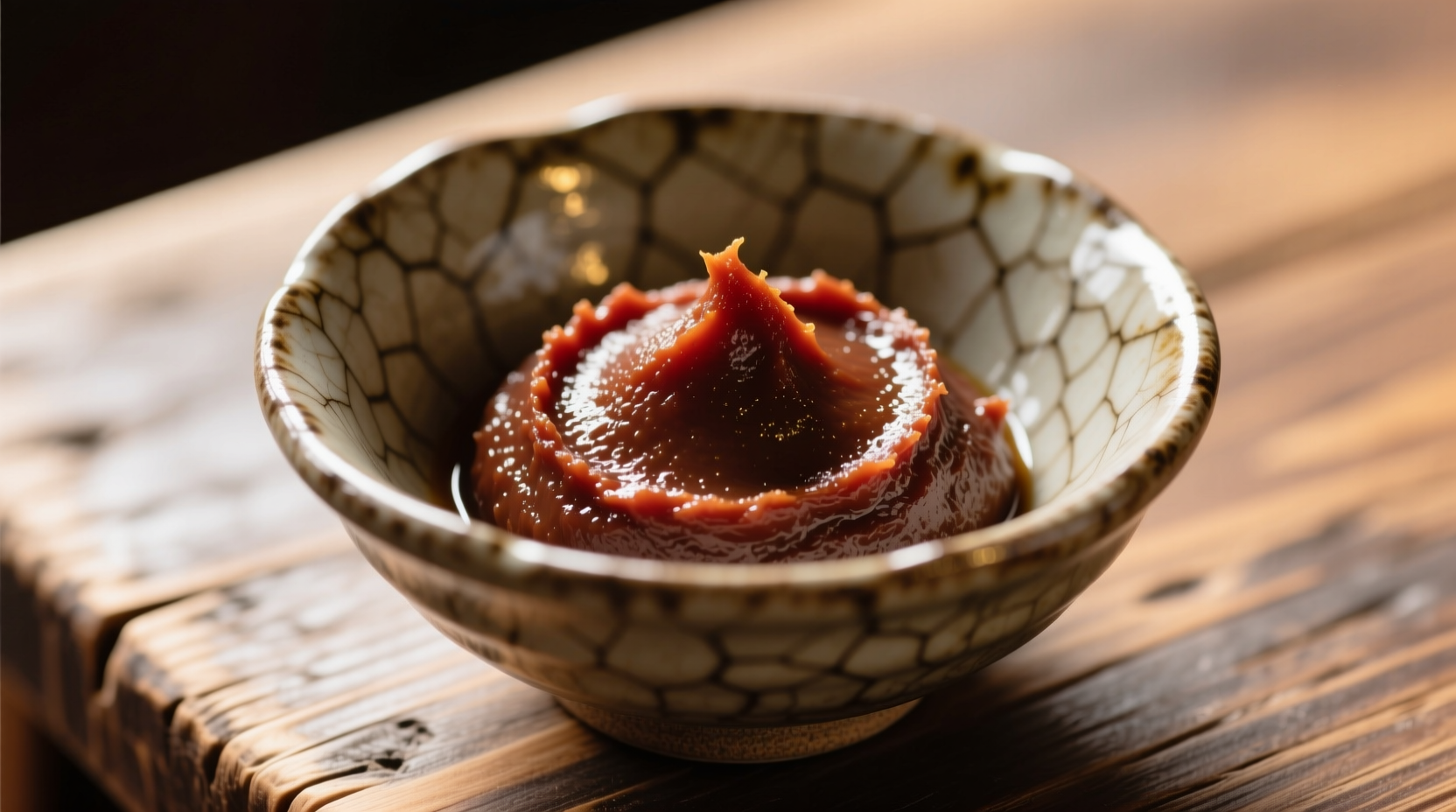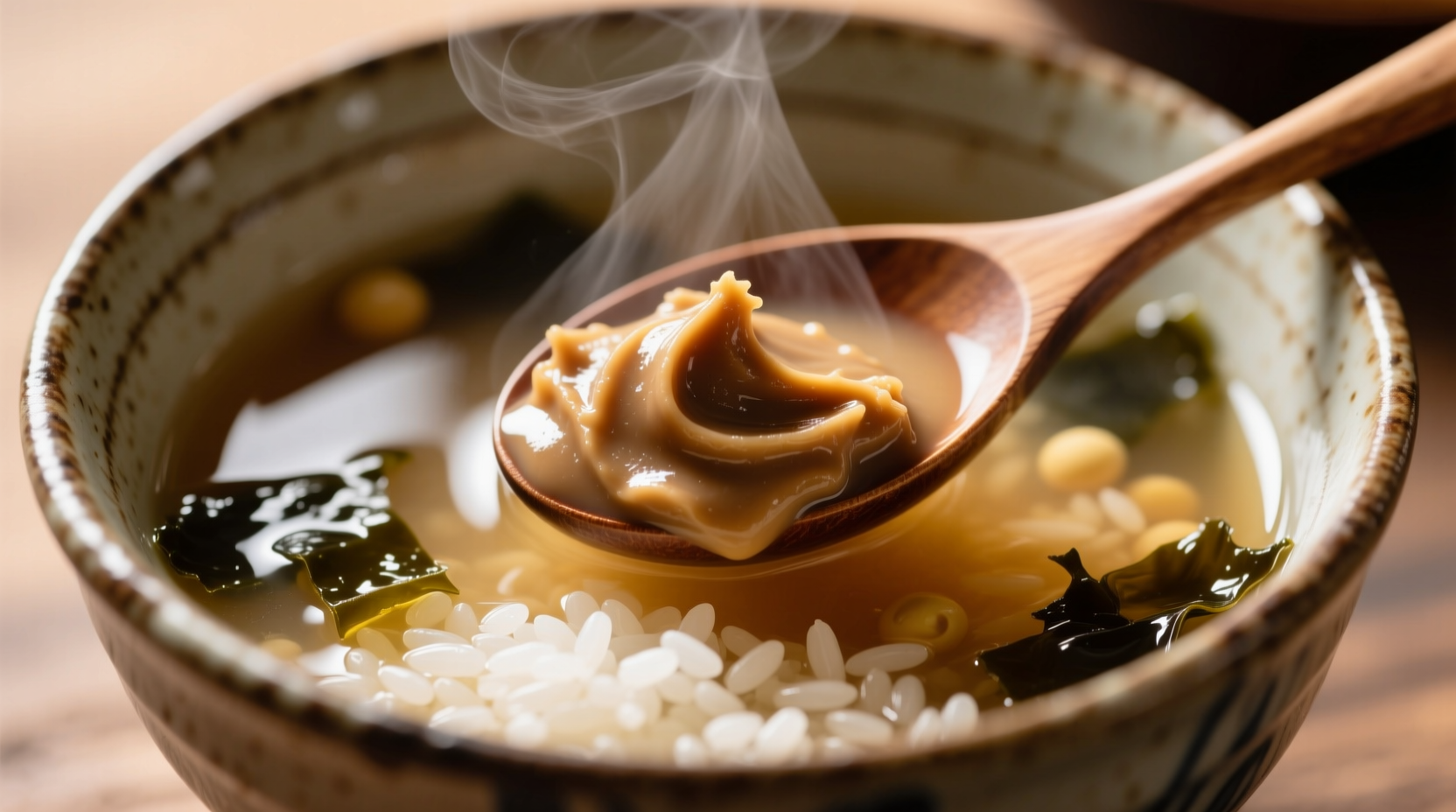Ever wondered what gives Japanese dishes their distinctive savory depth? Miso—the fermented soybean paste—is culinary alchemy in a container. This ancient ingredient transforms simple meals through its multifaceted flavor profile that professional chefs and home cooks increasingly recognize as essential for building complex umami layers.
The Essential Flavor Components of Miso
Understanding miso's taste requires breaking down its primary flavor elements. Unlike single-note ingredients, miso delivers a symphony of sensations that engage multiple taste receptors simultaneously:
- Umami dominance—The fifth taste sensation created by glutamates formed during fermentation
- Controlled saltiness—Typically 5-12% salt content depending on type and fermentation duration
- Earthy fermentation notes—Complex compounds from koji mold and bacterial activity
- Subtle sweetness—Natural sugars developed from starch breakdown
- Background bitterness—Especially noticeable in longer-fermented varieties
Food scientists at the National Agriculture and Food Research Organization in Japan have identified over 400 distinct flavor compounds in miso, explaining why our palates perceive such remarkable complexity from what seems like a simple paste.

How Miso Types Create Distinct Taste Experiences
The Japanese classification system for miso focuses primarily on color, which directly correlates to flavor intensity. This color-flavor relationship stems from fermentation duration and ingredient ratios:
| Miso Type | Primary Ingredients | Fermentation Period | Flavor Profile | Best Culinary Uses |
|---|---|---|---|---|
| White (Shiro) | Rice (50%), Soybeans (30%) | 3-6 months | Mild, slightly sweet, delicate umami | Dressings, light soups, marinades |
| Yellow (Shinshu) | Rice (40%), Soybeans (40%) | 6-12 months | Balanced saltiness, moderate umami, subtle sweetness | General purpose, miso soup, sauces |
| Red (Aka) | Soybeans (60%), Rice (20%) | 1-3 years | Robust, salty, deep umami, noticeable earthiness | Hearty stews, braises, strong-flavored dishes |
| Barley (Mugi) | Barley (40%), Soybeans (30%) | 1-2 years | Malty, complex, moderately salty | Vegetable dishes, dipping sauces |
Factors That Shape Miso's Flavor Development
Miso's taste isn't accidental—centuries of refinement have optimized specific variables that directly impact flavor. Understanding these elements helps you select and use miso more effectively:
Fermentation Duration: The Time Factor
Traditional miso production follows seasonal rhythms. Shorter fermentation (3-6 months) creates milder white miso with residual sweetness, while extended aging (1-3 years) develops deeper, more complex flavors through enzymatic breakdown. Research from Kyoto Prefectural University shows that glutamate levels—responsible for umami—increase significantly during the first year of fermentation before stabilizing.
Grain-to-Soybean Ratio: The Flavor Foundation
The balance between grains (rice, barley) and soybeans creates distinct flavor pathways. Higher rice content produces sweeter miso through koji's amylase enzymes converting starches to sugars. Soybean-dominant misos develop stronger umami and saltiness as proteases break down proteins into amino acids. This ratio explains why regional Japanese cuisines developed specific miso varieties suited to local agricultural products.
Regional Production Methods: Terroir Matters
Just like wine, miso expresses terroir—regional characteristics shaped by climate, water, and local microbial environments. Hokkaido's cold climate produces heartier misos that withstand long winters, while Okinawa's warmer temperatures accelerate fermentation, creating distinctive regional varieties. The Japan Miso Promotion Board documents over 200 regional miso variations, each with subtle flavor differences reflecting local traditions.
Practical Guidance for Tasting and Using Miso
Experiencing miso's full flavor potential requires proper handling. Follow these professional techniques to maximize its culinary impact:
Optimal Tasting Methodology
For accurate flavor assessment, prepare miso properly:
- Dilute 1 teaspoon miso in 1 cup warm (not hot) water
- Stir gently until fully dissolved
- Smell before tasting to identify aromatic compounds
- Sip slowly, allowing contact with all taste regions of your tongue
- Note the flavor evolution from initial saltiness to lingering umami
Culinary Application Guidelines
Maximize miso's flavor contribution in your cooking with these evidence-based techniques:
- Temperature control—Add miso at the end of cooking (below 140°F/60°C) to preserve delicate flavor compounds
- Flavor balancing—Counteract excessive saltiness with small amounts of rice vinegar or mirin
- Texture considerations—Use smooth miso for dressings, chunkier varieties for heartier applications
- Flavor layering—Combine with complementary umami sources like dried mushrooms or kombu
Common Flavor Misconceptions Clarified
Several persistent myths cloud understanding of miso's true flavor profile:
Myth: All miso tastes extremely salty
Reality: White miso contains as little as 5% salt—comparable to many cheeses. Proper dilution in cooking creates balanced seasoning rather than overwhelming saltiness.
Myth: Miso has a strong fishy flavor
Reality: Traditional miso contains no fish products. Any oceanic notes come from natural glutamates similar to those in tomatoes or Parmesan cheese, not seafood ingredients.
Myth: Miso's flavor is one-dimensional
Reality: Sensory analysis reveals miso contains multiple flavor dimensions that evolve during consumption—initial saltiness gives way to umami richness with underlying sweet and earthy notes.
Expanding Your Miso Palate: Practical Applications
Move beyond miso soup with these professional applications that showcase its versatile flavor profile:
- Marinades—Combine white miso with rice vinegar and ginger for delicate fish or chicken
- Dressings—Whisk yellow miso with sesame oil and citrus for vibrant vegetable salads
- Glazes—Reduce red miso with mirin for robust meat or roasted vegetable applications
- Sauces—Incorporate into béchamel for umami-enhanced comfort foods
- Vegetable enhancement—Stir into roasted vegetable dishes for depth without overpowering
When substituting between miso types, remember that darker varieties require about half the quantity of lighter misos to achieve similar flavor impact. Always taste as you go—miso's salt content varies significantly between brands and production batches.
Frequently Asked Questions
Does miso taste fishy?
No, traditional miso contains no fish ingredients and shouldn't taste fishy. Its deep umami flavor sometimes gets mistaken for fishiness, but authentic miso offers earthy, salty, and subtly sweet notes from fermented soybeans and grains. Any oceanic quality comes from natural glutamates similar to those found in tomatoes or aged cheeses.
Why does my miso taste too salty?
Miso naturally contains salt (5-12%) as a fermentation regulator and preservative. If your dish tastes overly salty, you've likely used too much or added it too early in cooking. For better results, dilute miso in warm liquid before adding to dishes, use less than recipes suggest, and balance with small amounts of acid like rice vinegar. Darker misos require particularly careful measurement.
How does cooking affect miso's flavor?
High heat degrades miso's delicate flavor compounds and aromatic qualities. For optimal taste, add miso at the end of cooking when temperatures stay below 140°F (60°C). This preserves its complex enzymatic flavors and volatile aromatic compounds. Gentle warming maintains the full flavor spectrum, while boiling creates a flatter, one-dimensional taste.
Can I taste the difference between miso types?
Yes, experienced palates easily distinguish between miso varieties. White miso offers mild sweetness with subtle umami, yellow miso provides balanced saltiness and moderate depth, while red miso delivers robust, complex flavors with noticeable earthiness. Barley miso presents distinctive malty notes. Professional chefs train to identify these differences to select the appropriate miso for specific culinary applications.
Does miso taste better with age?
Aging significantly impacts miso's flavor development. Shorter-aged misos (3-6 months) retain more sweetness and mildness, while extended aging (1-3 years) creates deeper, more complex umami and earthy notes through continued enzymatic activity. However, 'better' depends on application—delicate dishes benefit from younger misos, while hearty preparations require the robustness of aged varieties. Properly stored miso continues evolving for years.











 浙公网安备
33010002000092号
浙公网安备
33010002000092号 浙B2-20120091-4
浙B2-20120091-4